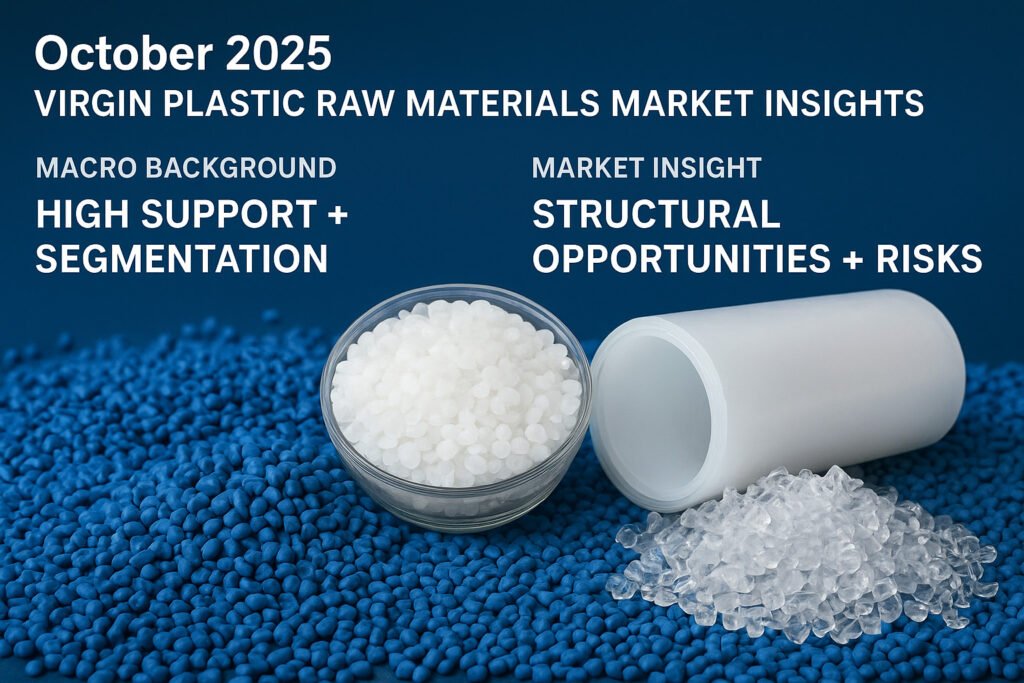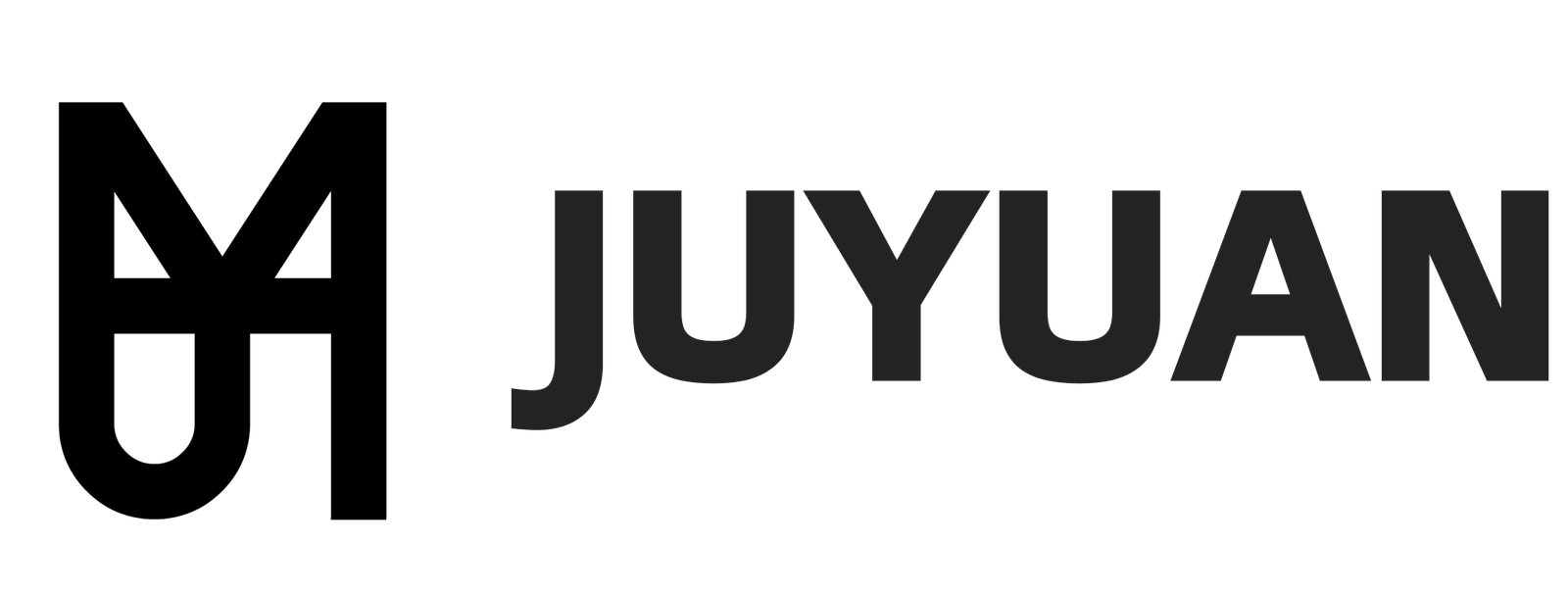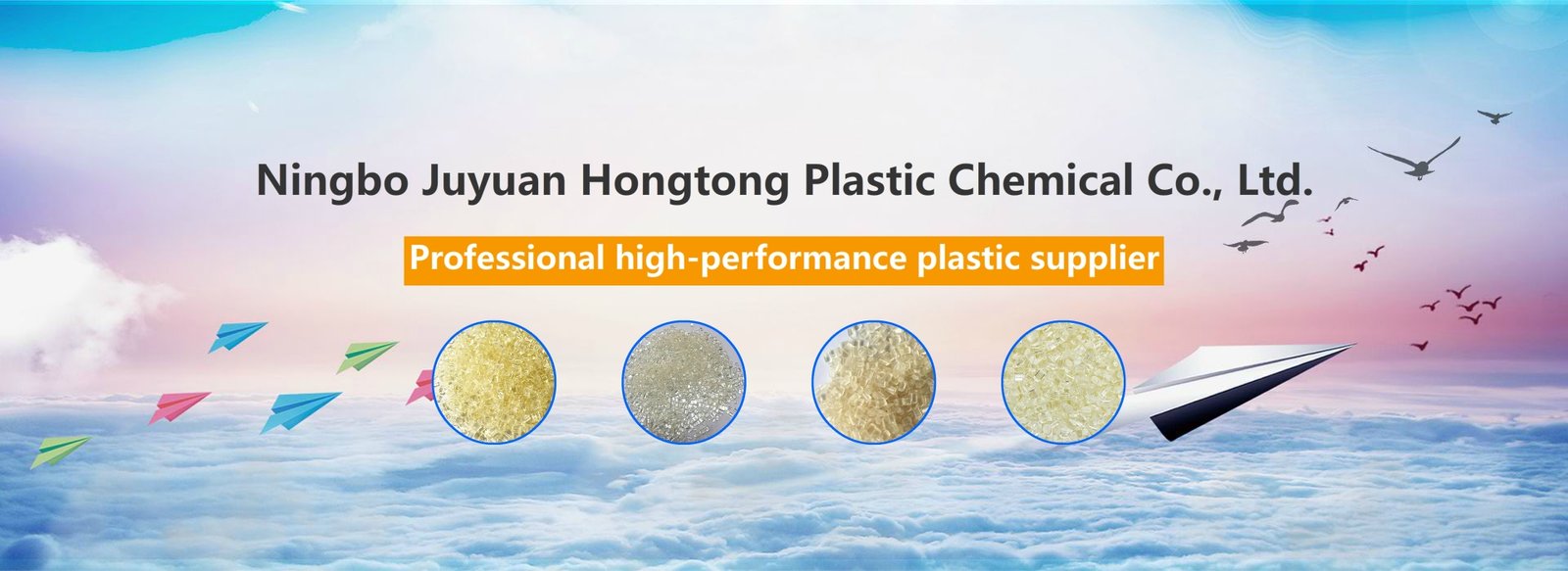1. Macro Background: The Market Enters a Phase of "High Support + Differentiation and Adjustment"
In the fourth quarter of 2025, the plastic raw materials market exhibited distinct structural characteristics:
・Strong support on the cost side: Crude oil prices remained high, and ethylene and propylene monomer prices remained firm.
・Polarized supply and demand: Demand for engineering plastics remained robust, while demand for general-purpose plastics recovered slowly.
・Rising transportation costs: Space on routes from the Middle East to East Asia was tight, and some brands experienced lengthening delivery cycles.
As a supplier deeply involved in the virgin resin trade, we believe this period is not a simple "rise" or "fall," but rather a period of structural opportunities and risks.
Below, we provide detailed market insights for October from three perspectives: news perspective, market analysis, and advice to customers/purchasers.

2. Recent Major News and Industry Trends (Impact on Virgin Plastics)
Covestro Raises PC Export Price; SABIC Takes Simultaneous Action
・This is due to tight upstream bisphenol A supply, rising costs, and increased logistics expenses. This makes PC one of the stronger categories in the virgin plastics market.
Kepital POM plants in South Korea are undergoing maintenance and delayed production
・This has somewhat weakened Southeast Asia/South Korea's POM supply capacity, signaling a regional shortage.
Some PP plants in the Middle East are undergoing maintenance
・Drawing and copolymer PP are particularly affected, leading to an upward trend in overseas market prices and creating arbitrage opportunities for export traders.
Energy and raw material prices are generally high
・Brent crude oil is hovering between $90 and $100 per barrel; ethane and propylene monomer costs are rising; and upstream raw materials such as BPA and isobutylene are fluctuating upward. These factors continue to support the cost of plastic raw materials.
Downstream demand recovery is uneven
・Demand for automotive, new energy, and electronic components is relatively strong, with a particularly strong demand for engineering plastics.
・Demand for general-purpose plastics in home appliances, packaging, and daily necessities is recovering more slowly, still constrained by cost and consumer confidence.
Trade barriers and tariff risks cannot be ignored
・Some countries are tightening import regulations and environmental standards for plastic products and raw materials (such as minimum recycled content and negotiations on a plastic pollution treaty), which may create policy obstacles to virgin material exports.
3. In-depth Analysis and Recommendations for Major Resin Categories
The following is our forecast and trading recommendations for the October trends of common plastic raw materials (PC/PBT/POM/PP/PE/ABS):
Price Trend: More resilient than most general-purpose resins, PC may see a slight upward trend or remain consolidated at a high level.
Driving Factors:
・Tight BPA supply and rising transportation costs
・Recovering demand for electronic, optical, and automotive structural parts
・Maintenance/production cuts at some PC manufacturers
Juyuan's assessment: Among engineering plastics, PC is the sector with the most "trend support."
Sourcing Strategy Recommendations:
・For high-end/transparent/heat-resistant PC, we recommend signing 1-3 month contracts in advance and stocking a mix of branded materials.
・You can seek quota guarantees/priority shipping rights from us.
・If the customer is a downstream precision parts manufacturer, we can recommend them to participate in a lock-in program to share some of the cost volatility risk.
PBT/Engineering Plastics (PBT, ПОМ, Пенсильвания, etc.)
Price Trend: Overall weakness is unlikely, with a moderate to strong outlook. Local price differentials in East Asia may widen.
Driving Factors:
・Recovering demand for wiring harness connectors and electrical components for new energy vehicles
・Pressure from maintenance/production suspensions at some factories
・Supply chain logistics bottlenecks
Juyuan's judgment: PBT/POM and other products offer numerous structural opportunities, supported by both engineering demand and supply constraints.
Procurement Recommendations:
・For stable models and long-term customers, sign guaranteed supply contracts for 2-4 months.
・For models with potential, futures/options hedging may be employed (depending on company capabilities).
・Once a maintenance announcement is issued, prioritize delivery schedules/backup plans.
Price Trend: Primarily volatile, with potential for periodic increases during maintenance periods in the Middle East.
Driving Factors:
・Fluctuations in propylene monomer costs
・Export maintenance/supply tightening
・Domestic inventory and market absorption capacity
Juyuan's Judgment: PP offers the most arbitrage potential among general-purpose materials and is also one of the most volatile price sectors.
Procurement Recommendations:
・Focus on batch spot orders combined with a small percentage of short-term contracts.
・Connect with foreign trade clients and explore opportunities for price differentials in the Middle East/Southeast Asia.
・Maintain a 2-4 week safety inventory to avoid missing out on lower prices due to excessive pre-stocking.
Price Trend: Range-bound, with a significant trend breakout unlikely.
Driving Factors: Ethane/ethylene cost performance, US export competitiveness, and domestic inventory pressure.
Juyuan's Judgment: In the short term, the market will be significantly impacted by both foreign market conditions and costs, making it suitable for flexible operations.
Procurement Recommendations:
・Restock at low points in the US/Southeast Asian markets.
・For models with high customer order certainty, lock in a small amount in advance.
・Large-scale stockpiling at high prices is not recommended to prevent the risk of stockouts or cost rebounds.
ABS (Acrylonitrile-Butadiene-Styrene)
Price Trend: Strong cost support, but weak demand recovery may lead to continued pressure.
Driving Factors: Raw material costs of styrene and acrylonitrile; weak shipments of home appliances/electronics.
Juyuan's Assessment: ABS is a high-risk category, characterized by large price fluctuations and sensitive downstream reactions.
Purchasing Recommendations:
・For bulk home appliance customers, we still prefer on-demand procurement.
・For highly transparent/engineering-grade ABS, a small amount can be locked in as emergency supplies.
・When quoting, we recommend providing a more detailed cost breakdown and a reasonable price increase range.
4. Operational Strategies and Customer Recommendations
As a raw material supplier/trader, we use the following strategies as a foundation for our daily operations and recommend them to downstream purchasing customers:
Contracts + Flexible Replenishment
・For engineering materials (PC/PBT/POM, etc.), it is advisable to sign flexible contracts with a minimum guarantee and replenishment period of 1–3 months. For general-purpose materials, short-term contracts should be primarily monthly or weekly.
Quotas/Priority Resource Allocation
・Establish a quota system with key customers (prioritizing supply during periods of tight supply) to demonstrate our strategic partnership status.
Transparent Quotes
・Break out upstream unit costs/space/brand premium/profit in the quote. This will make customers more willing to listen to cost justifications and more receptive to adjustments.
Equipment Maintenance/Abnormality Monitoring Mechanism
・Establish an internal monitoring system to track maintenance plans of manufacturers such as SABIC, Covestro, LG, and Kepital, and respond promptly to any announcements.
Tiered Inventory Management
・Stable/Large Customers: 4–8 Weeks of Safety Stock
・Regular Customers: 2–4 Weeks
・Small Customers/Short-Order Customers: Primarily on-demand shipments
Content Output + Industry Insights
・Provide customers with monthly or quarterly content such as "Market Updates," "Trend Analysis," and "Cargo Locking Recommendations" to strengthen our professional image.
5. Risks and Key Points
| Risk / Observation Point | Potential Impact | Response Strategy |
| Sharp fluctuations in monomer costs | Simultaneous cost pressure across all resin types | Strengthen monomer market monitoring and set early warning thresholds |
| Slower-than-expected downstream demand recovery | High risk of price decline for commodity resins | Maintain flexible inventory and avoid excessive stock positions |
| Changes in trade policies / environmental regulations | May affect export or import compliance requirements | Track regulatory updates in target markets and ensure compliance readiness |
| Unexpected plant shutdowns / extended maintenance | Supply disruption for certain grades | Build alternative supplier lists, maintain safety stock, and prepare substitution materials |
6. Conclusion: The market is still changing, and stable supply comes from reliable partners
The key words for the raw material market in October are "structural differentiation + cost support."
Ju Yuan believes that in an uncertain market, stable supply, flexible contracts, and transparent communication are the core of purchasing security.
Whether it's engineering plastics or general-purpose materials, we can provide spot and futures services for branded raw materials (SABIC, Covestro, Lotte, LG Chem, etc.), helping customers maintain a stable production rhythm amid fluctuations.

